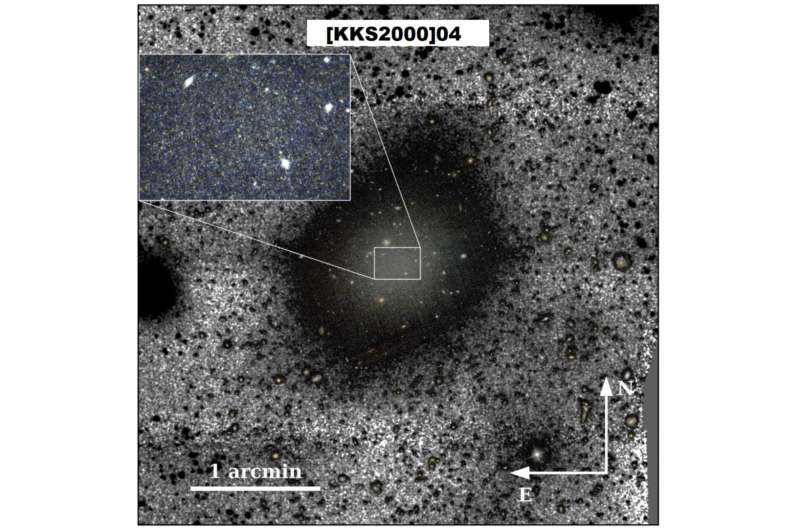Researchers solve mystery of the galaxy with no dark matter

A group of researchers from the Instituto de Astrofísica de Canarias (IAC) has clarified a 2018 mystery in the field of extragalactic astrophysics: The supposed existence of a galaxy without dark matter.
Galaxies with no dark matter are impossible to understand in the framework of the current theory of galaxy formation, because the role of dark matter is fundamental in causing the collapse of the gas to form stars. In 2018, a study published in Nature announced the discovery of a galaxy that apparently lacked dark matter.
Now, according to an article published in the Monthly Notices of the Royal Astronomical Society (MNRAS) a group of researchers at the Instituto de Astrofísica de Canarias (IAC) has solved this mystery via a very complete set of observations of KKS2000]04 (NGC1052-DF2).
The researchers, perplexed because all the parameters that depended on the distance of the galaxy were anomalous, revised the available distance indicators. Using five independent methods to estimate the distance of the object, they found that all of them coincided in one conclusion: The galaxy is much nearer than the value presented in the previous research.
The original article published in Nature stated that the galaxy is at a distance of some 64 million light years from the Earth. However, this new research has revealed that the real distance is much less, around 42 million light years.
Thanks to these new results, the parameters of the galaxy inferred from its distance have become "normal," and fit the observed trends traced by galaxies with similar characteristics.
The most relevant datum found via the new distance analysis is that the total mass of this galaxy is around one-half of the mass estimated previously, but the mass of its stars is only about one-quarter of the previously estimated mass. This implies that a significant part of the total mass must be made up of dark matter. The results of this work show the fundamental importance of the correct measurement of extragalactic distances. It has always been one of the most challenging tasks in astrophysics—how to measure the distances to objects that are very far away.
More information: Ignacio Trujillo et al. A distance of 13 Mpc resolves the claimed anomalies of the galaxy lacking dark matter, Monthly Notices of the Royal Astronomical Society (2019). DOI: 10.1093/mnras/stz771
Journal information: Monthly Notices of the Royal Astronomical Society , Nature
Provided by Instituto de Astrofísica de Canarias





















